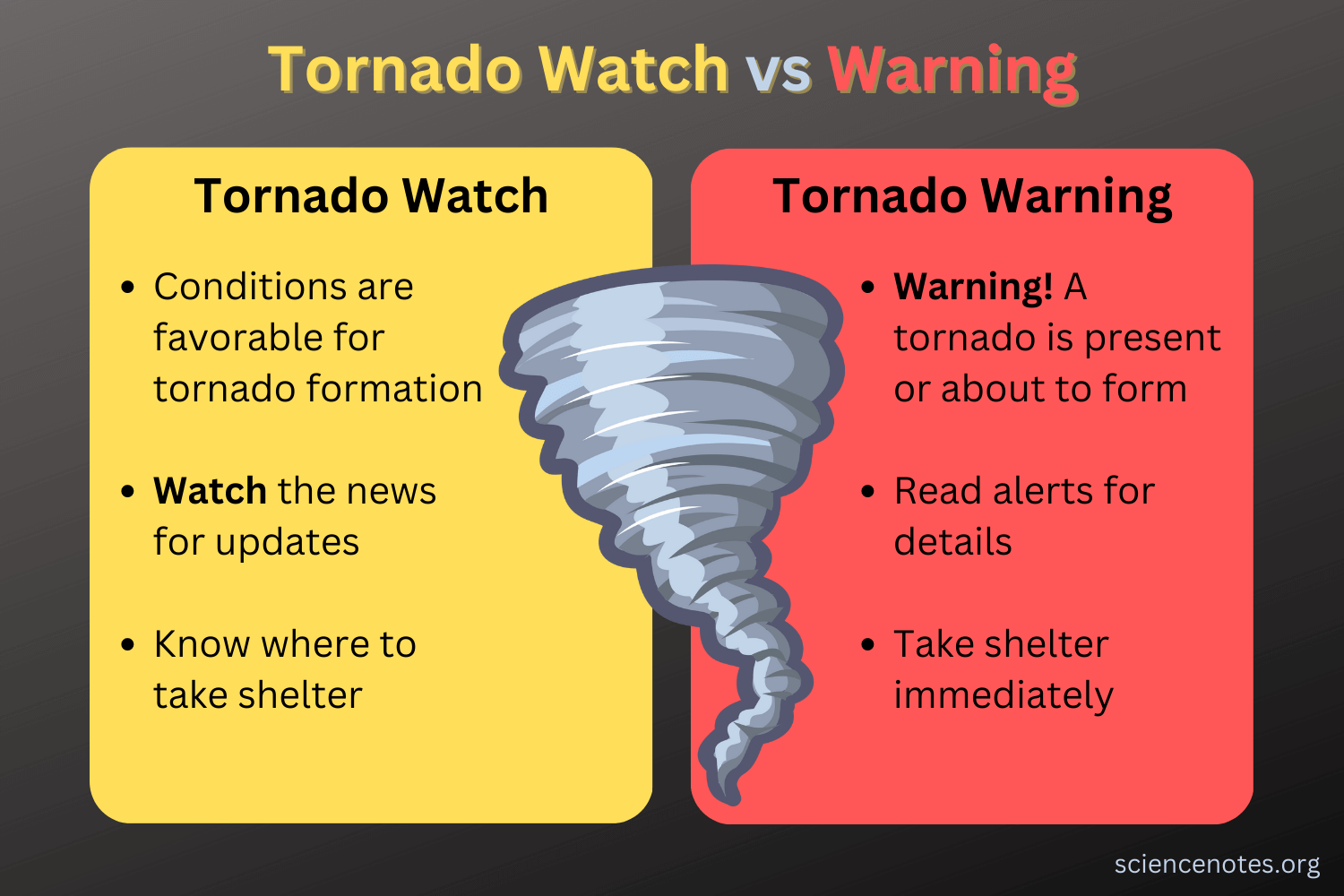What is the Difference Between a Tornado Warning and a Tornado Watch?
Tornadoes are a terrifying natural phenomenon that can cause significant damage and loss of life. When severe weather conditions arise, it’s vital to understand the difference between a tornado warning and a tornado watch. Both terms are used by meteorologists to alert the public about possible tornado activity, but they signify different levels of danger. Let’s explore the nuances between these two weather alerts to ensure you’re well-prepared in the face of severe weather.
A Tornado Watch: Be Alert and Prepared
A tornado watch is a weather alert that indicates that conditions are favorable for the formation of tornadoes in a particular area. It’s important to note that during a tornado watch, tornadoes have not yet been spotted, but the atmosphere is conducive to their development. The watch typically covers a vast geographic region and is issued by meteorological organizations such as the National Weather Service (NWS).
During a tornado watch, it is crucial to remain vigilant and prepared for severe weather. This means staying informed by monitoring reliable weather sources, such as local news stations or weather apps. It’s also advisable to review your family’s emergency plan and ensure everyone knows where to seek shelter in the event of a tornado.
It’s important to remember that a tornado watch does not guarantee the occurrence of a tornado. However, it serves as a warning that conditions are favorable for tornado formation and that you should be on high alert.
A Tornado Warning: Take Immediate Action
Unlike a tornado watch, a tornado warning is a more urgent weather alert. It is issued when a tornado has been spotted or is detected on radar in a specific area. When a tornado warning is issued for your location, it means that an actual tornado is either occurring or is imminent, and immediate action should be taken to protect your life and property.
Upon receiving a tornado warning, it is essential to take immediate action to ensure your safety. Follow these guidelines to protect yourself during a tornado:
1. Seek shelter: Move to the lowest level of your home, such as a basement or storm cellar. If neither is available, go to an interior room without windows, such as a bathroom or closet. Use blankets, pillows, or mattresses for added protection.
2. Stay away from windows: Flying debris is a significant hazard during tornadoes. Avoid windows, and cover yourself with a heavy object or furniture.
3. Listen to updates: Continue to monitor weather updates for any changes or additional warnings. A tornado’s path can change, so stay informed to ensure your safety.
4. Have a plan: It’s crucial to have a well-communicated emergency plan with your family members. Practice tornado drills so that everyone knows what to do during a real emergency.
5. Take shelter in public areas: If you’re in a public building, follow their designated tornado safety protocols. Seek shelter in designated areas such as basements or interior rooms away from windows.
Understanding the key differences between a tornado warning and a tornado watch is essential for your safety and preparedness. Being able to differentiate between the two alerts will help you know when to take immediate action and when to stay alert.
Frequently Asked Questions
Now let’s address some common questions related to tornado warnings and watches:
1. How Long Do Tornado Watches and Warnings Last?
Tornado watches typically last for several hours. They are issued when atmospheric conditions are favorable for tornado formation. Tornado warnings, on the other hand, are more time-sensitive and usually last for around 30 minutes to an hour, depending on the immediate threat.
2. Can a Tornado Warning Be Downgraded to a Watch?
Yes, it is possible for a tornado warning to be downgraded to a tornado watch if the threat decreases or the tornado dissipates. This downgrade reflects a reduced level of immediate danger but still indicates that conditions are favorable for tornado formation. It’s important to remain vigilant in case the situation changes.
3. What Should I Do If I’m Driving During a Tornado Warning?
If you’re driving and receive a tornado warning, it’s crucial to seek shelter immediately. Do not try to outrun the tornado or rely on mobile homes or vehicles for protection. If there is no available sturdy structure or designated storm shelter nearby, find the nearest low-lying area such as a ditch or depression, lie flat, and cover your head with your hands.
Final Thoughts
Understanding the difference between a tornado warning and a tornado watch is crucial for staying safe during severe weather events. A tornado watch means you should be on high alert and prepared for the possibility of a tornado forming. In contrast, a tornado warning indicates an immediate threat, and you should take shelter immediately. Stay informed, have a plan, and always prioritize your safety when facing severe weather conditions.
